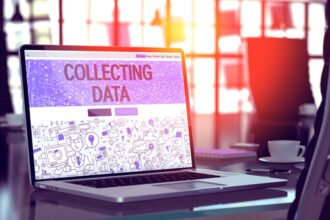Companies are discovering the countless benefits of using big data as they strive to keep their operations lean. Big data technology has made it a lot easier to maintain a decent profit margin as they try to keep their heads above water during a horrific economic downturn.
- Big Data is Vital to the Survival of Countless Businesses
- Integrate Digital Tools
- Use Digital Tools to Separate Personal & Business Expenses
- Use Digital Archiving to Keep Records of Invoices & Receipts
- Find Tax Deductibles with Machine Learning
- Set Payment Terms with Debtors
- Review & Categorize Business Expenses
- Be Smart about Debt!
One of the most important benefits of using big data is with expense tracking. This could help many cash-strapped businesses become more resilient during this horrifying recession.
Big Data is Vital to the Survival of Countless Businesses
With increasing uncertainty and evolving consumer demand, running a business seems like an enormous challenge. While some owners are leveraging AI-enabled systems to predict demand, others try to increase their market share. In all this hustle-bustle, people forget about the company’s financial well-being. After all, without sufficient capital, one will need to leverage big data and artificial intelligence to outshine competitors.
Simultaneously, decreasing income and rising expenses can pose an enormous threat of liquidity crisis for the business. Thus, before investing in business growth, streamline your business’s financial operations. You can maintain records, define income sources, and manage expenses. Although tracking expenses is every entrepreneur’s least favorite task, it is essential to fix harmful spending patterns and improve financial standing. Big data can make it easier for companies to accomplish this but they must invest in the right tools.
Besides helping with cost control, a cutback in expenses can significantly increase business profits while keeping the cash flows positive. Similarly, you can utilize these insights to make informed business decisions. However, if tracking expenses seem like an uphill battle to you, we have got you covered. Here are seven incredible small business expense tracking tips for effective cash flow management with data analytics tools.
Integrate Digital Tools
Undoubtedly, manually recording all business transactions and filing expense receipts can be quite time-consuming. Employees have to dig into piles of documents to find receipts and report the expense. In addition to being strenuous, it results in a loss of productivity and efficiency. Fortunately, with savvy digital tools and applications, business owners can track expenses by tapping fingers on the screen. So, why not download an expense tracker software to stay on top of all business expenses?
It would automatically track and note down your expenses, eliminating all the paperwork. You can link the software with different banks and online applications. Likewise, it consists of an auto-tag that will repeat all expenses, letting you differentiate between business and personal expenses. Do you know the best part? The savvy tracking tools allow you to speed tag the expenses, which means you can tag several expenses in a few taps.
Use Digital Tools to Separate Personal & Business Expenses
Usually, business owners argue that expenses are expenses, may it be for business or personal use. One should remember every company has a separate entity from its owners. Therefore, you should learn to distinguish between personal and business expenses. Here are some ideas and suggestions to avoid mixing up your business and personal expenses.
- Get a separate debit and credit card for the business. It will stop you from using personal accounts for business transactions, making tracking straightforward. Simultaneously, it would also draw a clear line between business and personal expenses.
- At times, you will come across shared expenses. For instance, you might take a prospective partner for lunch or stock up on coffee for employees. For such expenses, ask the cashier to ring up purchases as a separate transaction every time. It would help you maintain a spotless financial record while keeping the receipts separate.
- Despite being a sole trader, pay yourself a salary and transfer it to your account. That way, once the salary runs out, you won’t be digging into business funds for personal needs.
There are a lot of budgeting tools that use big data to separate your finances. You can use these tools to separate your personal and businesses expenses more easily.
Use Digital Archiving to Keep Records of Invoices & Receipts
Entrepreneurs believe in running the show themselves, thinking they are not accountable to anyone, but it is not valid. Every business has to abide by accounting standards and financial regulations set by the state. And out of many requirements, one is to keep records for all invoices and receipts. You would need them for calculating tax deductibles. Similarly, if your company undergoes an internal revenue system audit, you will have to show all receipts.
Thus, get your hands-on folders and start filing the invoices and receipts. Remember to write the date and purpose of expense on every receipt to avoid misunderstandings. Otherwise, if you don’t want all the messy paperwork, maintain records electronically. You can scan the receipts, turn them into PDFs, and create a separate folder for them on the desktop. Believe it or not, but you will thank yourself later for the organized record keeping.
There are a lot of tools that allow you to digitize all of your records. You can use more reliable data storage platforms to retain these records easily.
Find Tax Deductibles with Machine Learning
Any idea what is the entire point of tracking expenses? Indeed, it gives an insight into the company’s performance and identifies the costs that qualify for tax deductions. Business expenses such as advertising costs, commissions, office supplies, travel, and maintenance – all fall under deductibles. Hence, you can deduct these expenses from total sales to reduce your taxable income, which will reduce the overall tax expense.
For instance, your income was $500, and tax expenses were 21%, i.e., $105. After deducting $200, the revenue would decrease to $300, and tax expense will fall to $63. In short, finding tax deductibles can help you pinch some pennies on the tax expense. Besides, if you are using a digital tracking tool, it leverages machine learning, automatically finding expenses you can deduct.
A lot of machine learning tools have made it easier to do your taxes. They can use data mining algorithms to find potential deductions and screen your tax records to see if you qualify.
Set Payment Terms with Debtors
According to U.S Bank research, 82% of business failures happen due to inadequate cash flow management. Usually, there is a lot of money going out of the business in the form of expenses. In addition to leaving the cash flow negative, it disrupts the company’s financial outlook. Therefore, you have to cut back on outflows and maximize inflows to ensure cash availability. And the best way to do so is by setting smart payment terms with customers.
After all, the sooner you send an invoice, the more quickly you get paid. Similarly, you can also set discounted payment terms. If a customer pays within ten days, he will receive a 2% cash discount. It would bring cash into the business while strengthening the relationship with customers. Also, align these payment terms with creditors to avoid paying suppliers from your pocket.
Review & Categorize Business Expenses
Unsurprisingly, your job doesn’t end after tracking the expenses. You should make an effort to review them and determine ways where you can cut back on costs. Firstly, bring your employees on board and hold them accountable for their expenses on behalf of the business. For example, if workers are traveling to attend a conference or buying office supplies, ask for records before reimbursing them. As a result, you would only pay for actual expenses, ensuring transparency in the business.
Moreover, calculate every expense as a percentage of total expenditure to recognize the substantial costs. If rent cost covers 50% of total expenses, consider changing the office location. Similarly, in case tariffs or customs duties are eating a huge chunk of profits, find alternates. You can turn to local suppliers to purchase raw material or switch to a different logistics company. It might seem time-consuming but scaling down expenses have incredible long-term benefits.
Be Smart about Debt!
Although the concept of loans sounds scary due to increasing market volatility, it is quite common in businesses. At one point in time, every company needs additional capital to keep the business running. However, the key to borrowing a loan is to make sure the returns are higher than investment. Otherwise, interest would be an extra expense in your financials. If you think of purchasing a plant, calculate the returns it will generate and compare it with the loan amount.
It will help you conduct a cost-benefit analysis, demonstrating whether benefits are higher than the costs or not. Moreover, calculate the ‘interest coverage ratio’ to determine how many times you can pay off the interest expense. It will help you set smart repayment terms, closing doors for default and bankruptcy.
Big Data Tools Have Made it Easier than Ever to Manage Expenses as a Business Owner
Undeniably, tracking business expenses and managing money are the two challenges of every business. Some struggle with tax calculation, while others can’t stick to a budget. Here, tracking and managing expenses can be super useful for a company’s financial position. It reduces overall business costs, finds deductibles, and keeps the cash flows positive, eliminating the chances of liquidity problems.
You can achieve these goals much more easily by using big data technology. Data analytics has proven to be surprisingly effective at tracking and managing business expenses. You just need to invest in the right tools.









